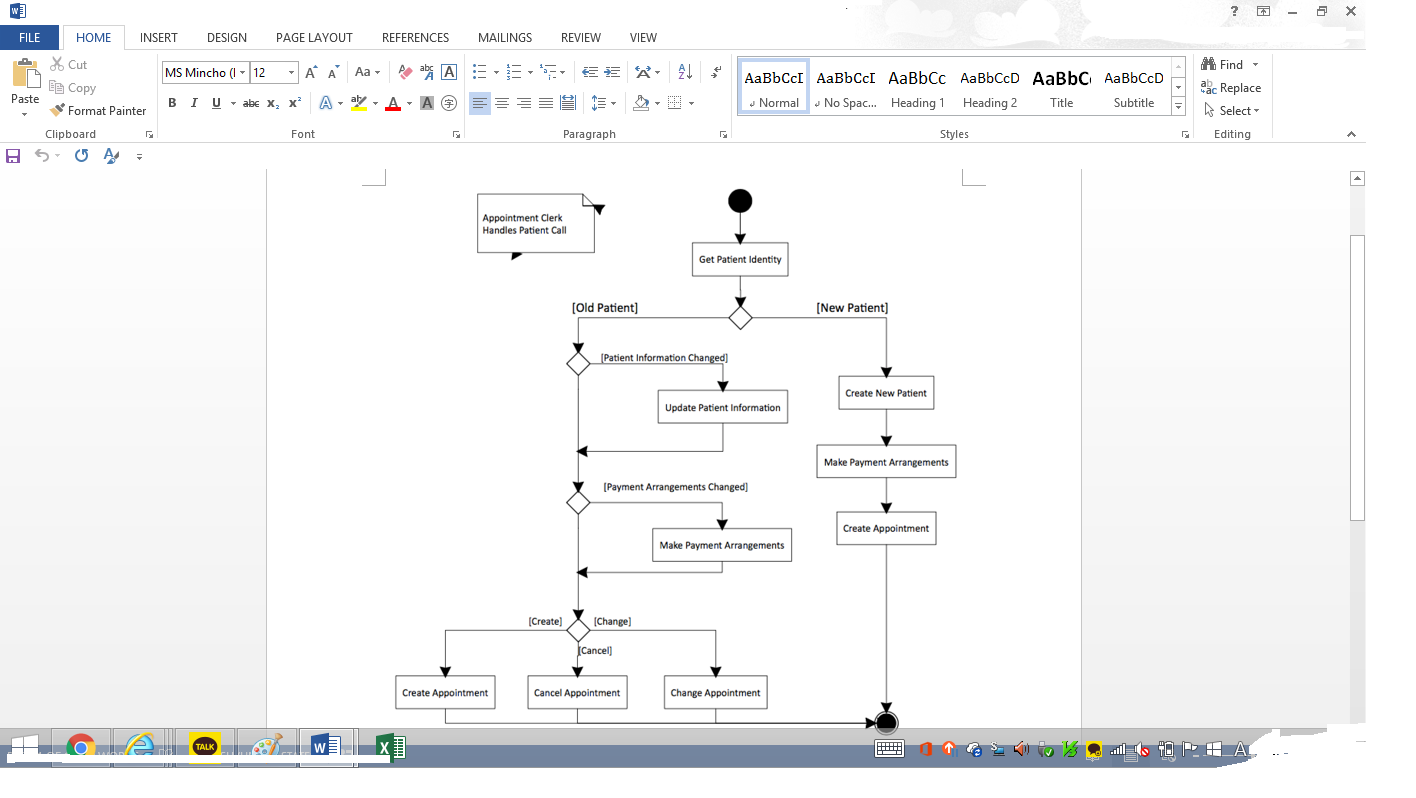Question
Let's say that you are a systems analyst doing some consulting work for a doctor's clinic, and you are just now looking over the shoulder
Let's say that you are a systems analyst doing some consulting work for a doctor's clinic, and you are just now looking over the shoulder of an allied health assistant, Jo, whose job is to handle patient calls and make appointments for them with medical staff. You have been told that patients have complained that the appointment-making process is inefficient, and Jo confirmed that with a big "oh, yeah!" when you asked.
As you watch with the activity diagram in your hand, a current patient calls in to make an appointment. In spite of their stuffed-up nose, Jo is able to get their name, address, and birthdate. On her computer she starts a new Appointment Request. Their patient information appears on the screen. She asks whether any of their contact information needs updating. No. [You see how the activity diagram addresses patient information updates before going on to anything else.] Their payment arrangement information appears on the screen. She asks whether their current payment arrangements are still up to date. Yes. Now Jo is finally on the screen where she can ask whether they wish to create, cancel, or change an appointment. They say, "I told you, I need to make an appointment with Dr. Droll." Jo says, "Oh, yes! Sorry. The appointment screen doesn't come up until after we've gone through any patient information updates and changes to payment arrangements. Let's see. Create appointment. OK. With whom?" "With Dr. Droll!" (The patient and Jo are now able to come to agreement on a date and time. Symptoms are noted in the Appointment Request. All is well. The patient asks, "By the way, can I put this visit on a new credit card?" Jo stifles a groan. "Sure. Just let me finalize this session and start a new one. [You note that the activity diagram indeed does not provide a way for the computer system to jump back to a prior event. The events must be dealt with in a fixed order.] What was your address again? Got it. No updates to patient information. . . OK, now the screen is up where I can change payment arrangements. Please give me your credit card information."
You have been tracing these events through the activity diagram. It appears that the computer system does follow the activity diagram perfectly, unfortunately. You begin to think of ways to alter the activity diagram so the software engineers can rebuild the system to let the patients have complete flexibility for making requests.
Using Visio with the UML stencils, please submit an activity diagram that allows all the actions that appear in the below attached activity diagram, but allows them to occur in any order that makes sense to the patient.
Someone answered to my question, but I can't really figure out what he did because the file he uploaded was way too small for me to see. I will appreciate it more if you can upload bigger size :) Thank you.
Step by Step Solution
There are 3 Steps involved in it
Step: 1

Get Instant Access to Expert-Tailored Solutions
See step-by-step solutions with expert insights and AI powered tools for academic success
Step: 2

Step: 3

Ace Your Homework with AI
Get the answers you need in no time with our AI-driven, step-by-step assistance
Get Started


